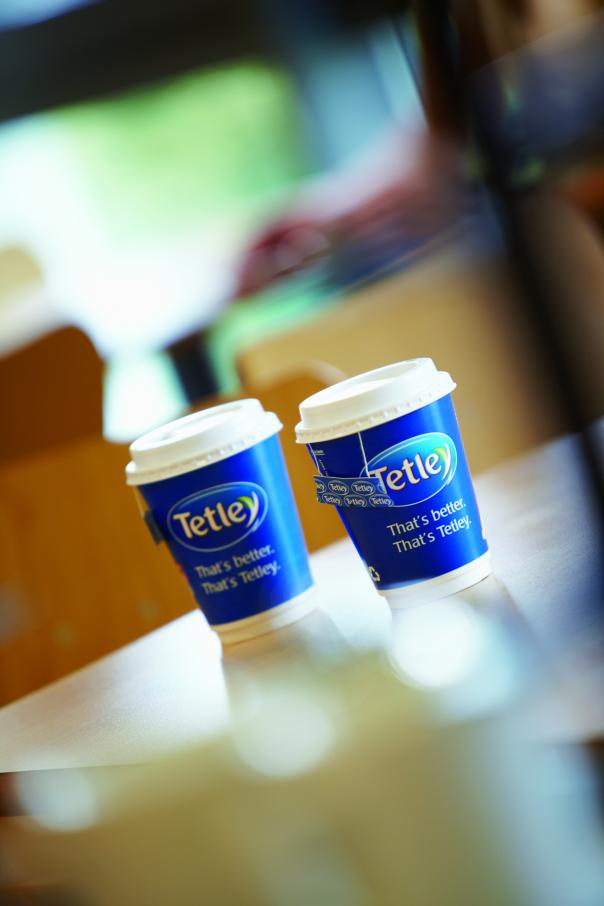
Commodity prices are up 4.5% in the past year according to the Office of National Statistics, while the average price of tea is expected to rise by a further 7-8% over the course of 2013, caused by the unpredictability of sourcing in countries such as India and Africa. No doubt this will have an impact on costs and will mean cost sector operators justifying the price they will have to charge for their cuppa even more, whether consumed on site or on the go.
The UK currently drinks more than 60 billion cups of tea annually and suppliers say the bestsellers usually include English breakfast, Earl Grey, green, redbush and decaf, fruit and herbal infusions, and chai, but particularly any with healthy connotations are gaining ground.
Joanne Sexton, purchasing manager at Acquire Services, says it is seeing a renewed interest in chai as a caffeine-free alternative hot drink.
“This drink is especially popular in the early months of the year when customers are detoxing after the festive season,” she explains.
“Although still a small percentage of overall hot drinks sales, the range of flavoured chai continues to grow and it is being seen more as an alternative to mainstream hot drinks.”
Ranges have broadened to include more flavours and formats to take into account consumers’ demand for variety, and there are also new ideas being expounded from bubble tea to frozen tea.
For example, a competition run by the British Frozen Food Federation saw University College Birmingham student Sumaiyah Patel pioneer an innovative frozen tea. She developed four varieties of tea cubes containing freshly frozen fruit and herbs that can be put into a teacup, hot water added and instantly drunk, aimed at the premium end of the market for people “who are into good food” and who “enjoy a cup of tea”. With more focus now on healthier food, it is believed the frozen tea cube could be a big hit.
“Current trends show that tea has become the new coffee and round 60.2 billion cups are drunk every year,” says Patel. “With different flavours becoming more prominent in the UK market, why hasn’t frozen tea been produced?”
Ahmed Rahim, CEO of Numi Organic Tea exclusively supplied by United Coffee, says that in the latter’s recent Onepoll research, it found that eight out of 10 consumers ranked quality and taste over price. “This confirms what we’ve always known – that consumers are looking for one thing: better quality tea,” he says.
“This demand for quality has created room for growth and diversification in the UK tea market. In the future we’re likely to see more premium gourmet tea offerings develop as well as more exotic tea, green tea varietals, pu-erh, fruit and herbal tea becoming everyday drinks.”
John Sutcliffe, out of home and convenience controller at Taylors of Harrogate, believes customers are willing to pay more for blends that offer a balance of quality, taste and value for money.
“Value for money shouldn’t be confused with a cheap tea option, though – what we’re finding is brand reassurance, combined with a good range, will serve caterers well in maximising profits,” he says.
“The advantage that caterers have over ‘in the home’ is that the tea can become more experiential. If you consider how the average cup of tea is made at home – in a mug – then we begin to understand how caterers can enhance the image, perception and value of their offering. If it suits an operation, little things like teapots and milk and sugar served on the side add value to an at-home ritual that too often isn’t given the care or time.”
He says there is also a huge opportunity for cross-selling food with tea.
“A quick look at the cost sector’s biggest competition – the high street – shows how being clever with meal deals and food and drink pairings can give customers value for money and get tills ringing,” he explains.
Tetley marketing director Dorothy Sieber agrees with this view and says expanding blends enables caterers to take advantage of consumers’ demand for new products to achieve a higher mark-up and upsell by matching tea with food.
“Tasting notes that pair tea with the food being served give the operator the opportunity to upsell and cross-sell,” she says. “Tetley’s Tea Academy teamed with the Craft Guild of Chefs vice-chairman Lee Maycock to create tea and food matches, which caterers can find on our website.”
Sieber says a current key trend is towards afternoon tea, where speciality infusions are matched with finger sandwiches, scones and macaroons.
Getting tea to an acceptable standard for Brits is acknowledged as harder to achieve as, unlike coffee where baristas rule the brew, tea is more personal and consumers are more precise about how they want it served.
However, James Roberts, joint MD of ethical tea supplier Peros, which supplies Eros Fairtrade tea, says that the rules are simple for making tea: “Use good quality tea, which should be stored at room temperature, always use freshly drawn boiling water, use a single bag for each cup to be served, and allow the tea to brew for the recommended time before pouring. If brewing in a pot, put the milk into the cup before pouring. If brewing in a cup, then it’s best to put the milk in afterwards.”
Quality china is a way to create theatre and visual excitement around the tea-making process, he adds – although, a practical compromise is a stainless steel pot ¬– and always provide somewhere to put used tea bags.